We replace the camshaft seals when repairing the cylinder head and when oil leaks from under the seal
If we change the oil seals on the engine, then we need to remove the drive and timing belts, as well as remove the phase regulator and the exhaust valve pulley
For clarity, we will show all the work on the dismantled cylinder head.

The polymer seal of 1.6L engines has a flat working edge (1) and a protective sleeve (2), which serves to install the seal on the engine (see Fig. 1).
Installing the exhaust camshaft oil seal
Be sure to use a protective sleeve, as this type of oil seal is very easy to damage. It is strictly forbidden to touch the polymer seal itself in order to prevent oil leakage after installing the seal on the engine.
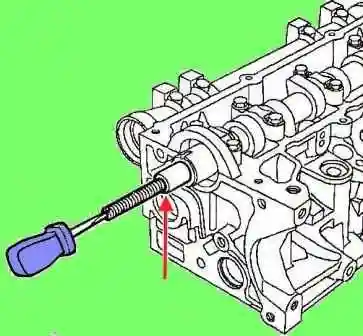
- Screw the pin (1) of tool Mot.1632 into the camshaft (see fig. 2).
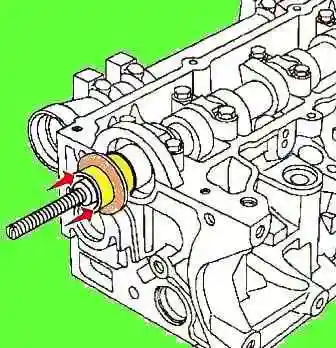
- Install a protective sleeve with an oil seal put on it on the camshaft. When doing this, do not touch the gland (see Fig. 3).
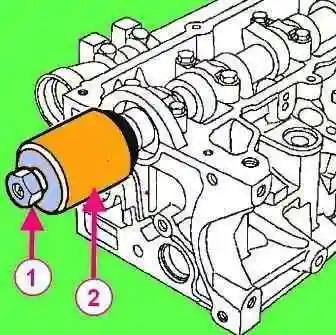
- - Fit the pressure cap (2) and collar nut (1) of tool Mot.1632 (see fig. 4).
- - Tighten the collar nut until the cap touches the cylinder head.
- - Remove the nut, cap, protective sleeve and stud.
Installing the intake camshaft oil seal
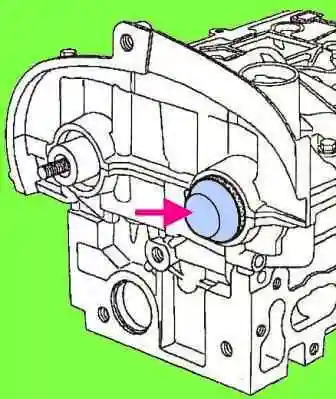
- Install a protective sleeve with an oil seal on the camshaft, being careful not to touch itself
gland by hand (see arrow, Fig. 5).
- Press the protective sleeve in the center so that the oil seal is fixed in the socket.
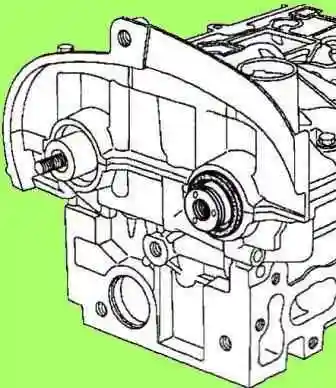
- Pull out the protective sleeve so that the oil seal does not fall out of the socket (see Fig. 6).
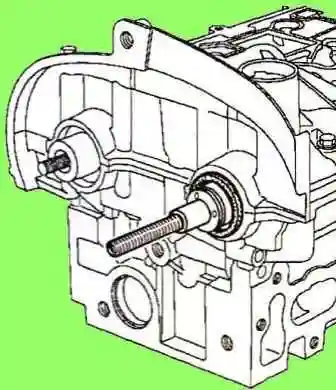
- Screw the pin of tool Mot.1632 into the camshaft (see fig. 7).

- - Install the pressure cap (2) and collar nut (1) of tool Mot1632 (see fig. 8).
Tighten the collar nut until the cap contacts the cylinder head.
Remove the nut, pressure cap and stud.





